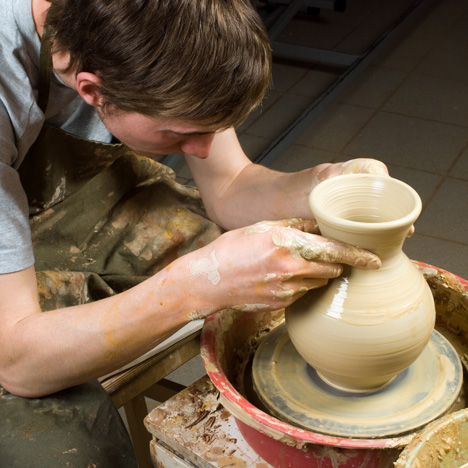
UK to drop crafts from list of creative industries
News: crafts will no longer be considered part of the creative industries under proposals published by the UK government this week.
The proposed change is part of a review of the UK's creative industries set out in Classifying and Measuring the Creative Industries, a consultation paper released by the Department for Culture, Media and Sport yesterday.
"We recognise that high-end craft occupations contain a creative element, but the view is that in the main, these roles are more concerned with the manufacturing process, rather than the creative process," says the paper.
Arts and antiques will also be dropped from the list of recognised creative industries, while other categories will be merged into "broad creative industry groups".
A number of new IT categories are proposed to reflect the growing technology sector.
Announcing the consultation, culture minister Ed Vaizey wrote on his blog: "Huge and rapid changes in the use of technology and digital media in the creative industries means that it’s time to take a full review of our classifications."
He added: "Digital tools are now utterly embedded in the creative process, so we want to introduce some areas of IT that are used creatively."
Adopting the new classification system boosts the number of people employed in the UK's creative industries to 1,487,000 people, according to the DCMS, compared to 897,000 under the previous methodology. The figure rises to 2,153,000 if creative occupations outside the creative industries are taken into account.
IT, software and computer services is the biggest of the new broad creative industry groups, with 470,000 employees, according to the paper. Publishing employs 214,000 people while Film, TV, radio and photography account for 205,000 jobs.
Music, performing and visual arts employ 182,000 people. Advertising and marketing is the next largest with 144,000 workers, followed by Design and designer fashion with 103,000. Architecture is the smallest of the new broad creative industry groups, employing 99,000 people.
The proposed changes are intended to update the ground-breaking 1998 Creative Industries Mapping Documents, which were one of the first attempts to quantify the value of creative businesses to the economy.
The review adopts the “creative intensity” methodology to discern which sectors should be included as creative industries. Any industry where more than 30% of workers do creative jobs is considered a candidate for inclusion.
Consultation on the proposed changes closes on 14 June 2013. Details of how to respond can be found here.
Top image of a potter courtesy of Shutterstock.